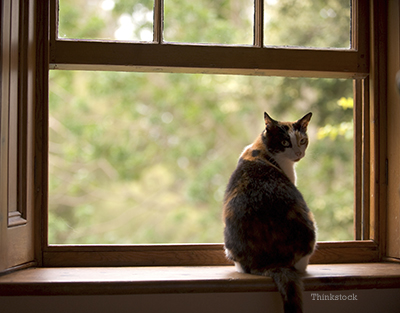
Feline Leukemia Virus (FeLV) is a retrovirus affecting domestic cats worldwide. Thought to have originated in cats hundreds of thousands of years ago, as a mutation of a mouse virus, it was first detected in 19641. It occurs everywhere, but data is still lacking to determine, with certainty, how many cats are affected. In the USA and Canada, prevalence of FeLV infection in individually kept cats seems to be low. In individual households, the prevalence is less than 1%. However, in large, multi-cat households the prevalence may be greater than 20%1.
Is FeLV a serious condition?
FeLV infection can affect cats in many ways. According to the Cornell Feline Health Center, it is the number one cause of cancer in cats and it can also cause a variety of blood disorders as well as lowering resistance to infection for other diseases.
Many cats that are infected can go months or even years without developing signs of disease, which is the reason why testing is so important to detect infections, prevent the spread of the disease and allow you to protect your uninfected cats.
The prevalence of FeLV continues to decline because of a variety of testing and, most significantly, because of use of effective vaccines against the virus.
Is my indoor cat at risk for FeLV?
While the risk to indoor, confined cats is low, all cats are at risk. Only you and your veterinarian can decide how great of a concern that risk is. Keep in mind:
- Infected cats shed the virus in very high concentrations, so any exposure can be a significant risk of infection.
- Kittens born to or exposed to infected cats are at high risk of infection; adopted kittens may introduce the virus into your household.
- Even your indoor cat may find his way outside from time to time or a new cat may enter the household.
- If any of your cats are outdoors to any degree, they can potentially transfer the infection to an indoor cat.
How can I protect my cats?
As recommended by the American Association of Feline Practitioners, all kittens and new cats should be routinely tested for FeLV, when acquired. They also recommend repeat testing of negative cats at least 60 days later in case of early infections that were not detected. Cats with dental disease, respiratory signs or other opportunistic infections should also be tested. You should discuss vaccinations with your veterinarian. Future lifestyle risks are difficult to predict and kittens are particularly susceptible to infection.
If you have any questions or concerns, you should always visit or call your veterinarian -- they are your best resource to ensure the health and well-being of your pets.
Resources:
